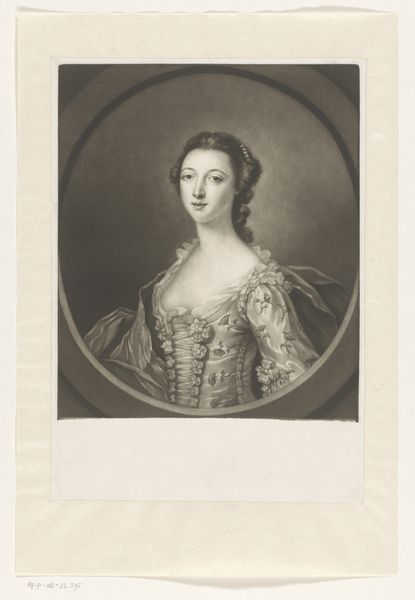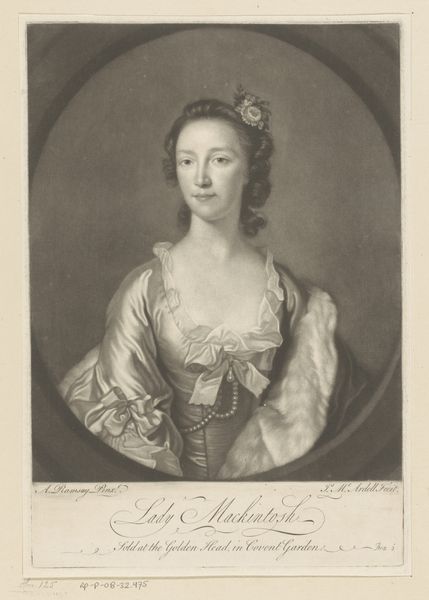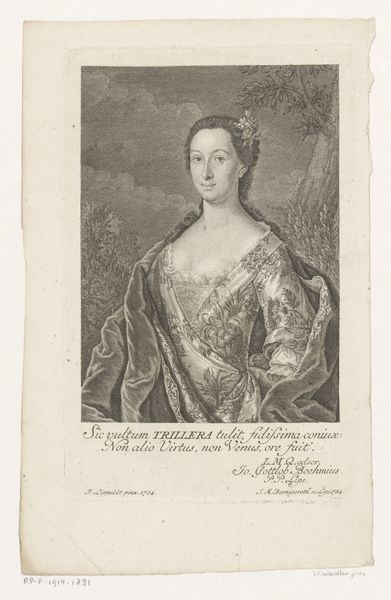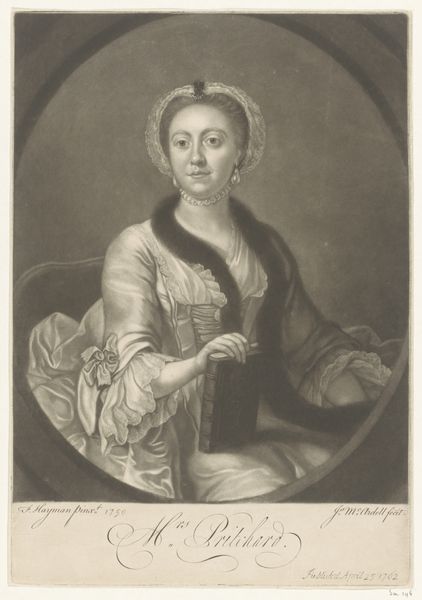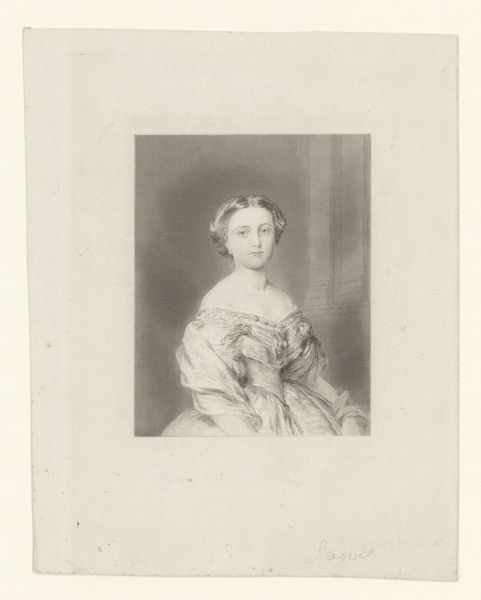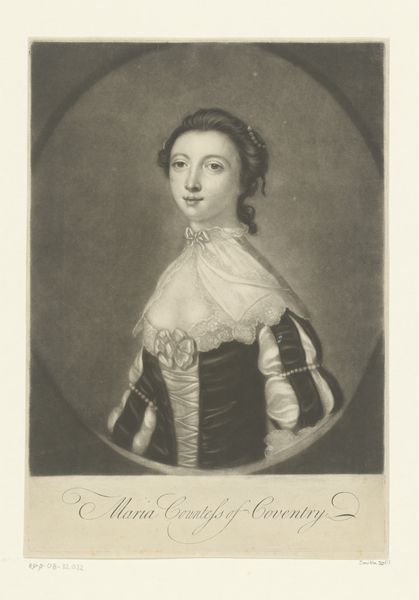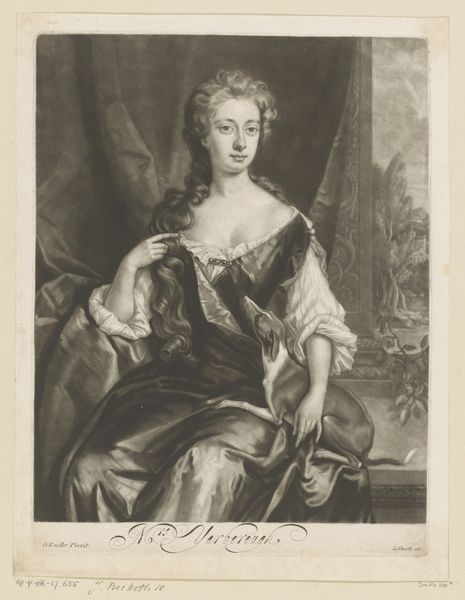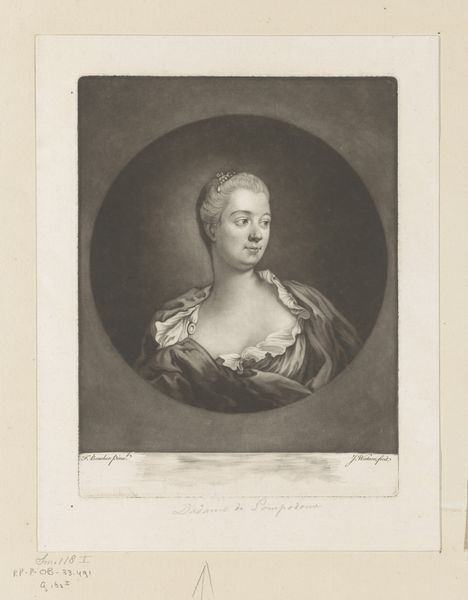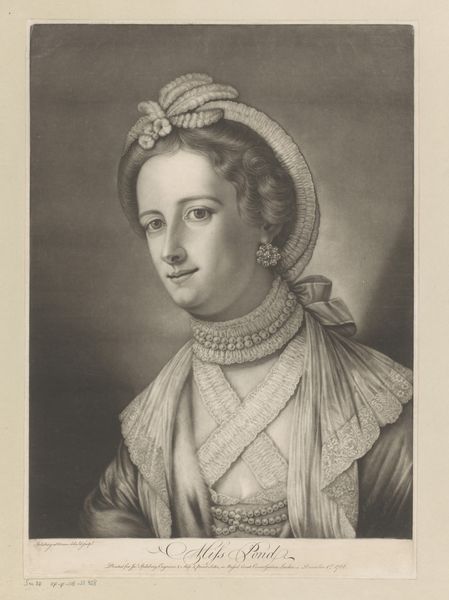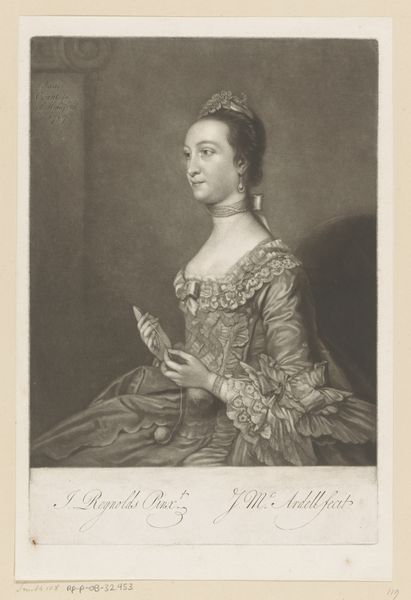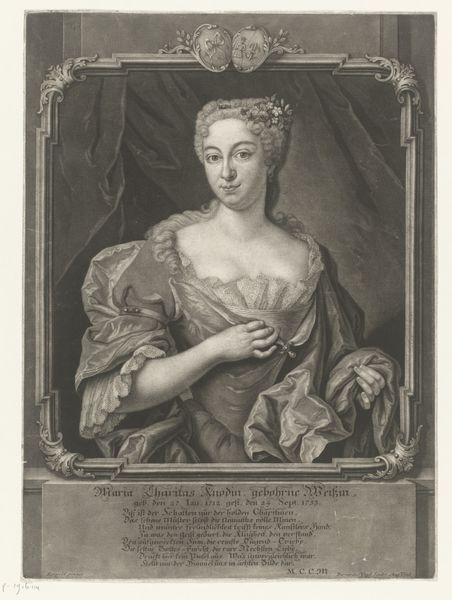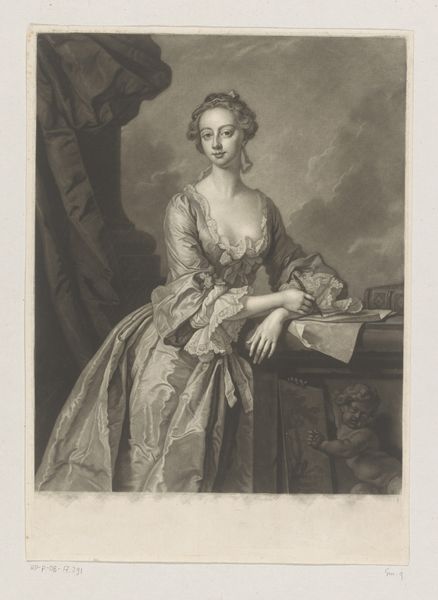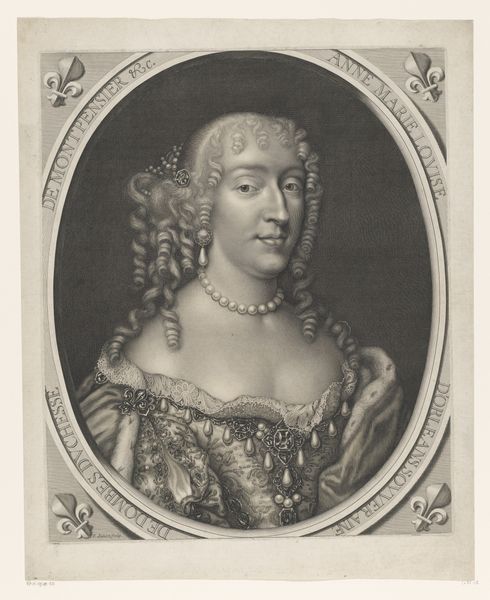
print, engraving
#
portrait
#
baroque
# print
#
old engraving style
#
engraving
Dimensions: height 330 mm, width 229 mm
Copyright: Rijks Museum: Open Domain
Curator: This artwork, housed here at the Rijksmuseum, is entitled "Portret van een onbekende vrouw in een gebloemde jurk," or "Portrait of an unknown woman in a flowered dress" made sometime between 1731 and 1775. It's an engraving by Richard Houston. Editor: My immediate impression is one of formality, and even a touch of melancholic restraint. The oval composition and limited tonal range evoke a sense of classical reserve, wouldn’t you agree? Curator: It's important to consider the labor and process that went into creating an engraving like this in the mid-18th century. The detail achieved by Houston with this printmaking process, manually incising lines into a metal plate and then transferring the image to paper, is extraordinary. How the image moves from the artisan's hand, the printing press, to the consumer is really fascinating. Editor: Indeed. The composition is intriguing; note how the artist uses line to direct our gaze from the face downward. Her simple pearl necklace is balanced against the lush embroidery of her dress and the exquisitely detailed rendering of the corseted bodice. Semiotics might call these markers of status, signaling her place in the social structure. Curator: Exactly. This wasn’t a spontaneous snapshot, but a carefully constructed image designed to convey a certain message about the subject's place in society. How does the availability of the print, distributed at different strata, affect or influence the consumption of imagery within social groups? Editor: I see what you're saying about considering print's accessibility, its influence. And in terms of composition, I am stuck at how that flowered dress and that almost severe bodice interplay—the artist has created something formally brilliant in terms of how balance the curves and the strict linear design here. Curator: The artist, Richard Houston, occupied a specific role in the art world. He wasn't creating an original painting, but reproducing an image, making it available to a wider audience. Understanding that role and the production behind it can show the economics behind even the aesthetic elements that might grab a viewer's attention initially. Editor: You’re absolutely right. Seeing the print and the era with its social context is crucial here—but equally important is the visual, and how the artwork achieves its delicate sense of beauty. Curator: It gives a new layer, yes—a bridge between the handcraft of print and art as distributed imagery. Editor: Precisely.
Comments
No comments
Be the first to comment and join the conversation on the ultimate creative platform.
